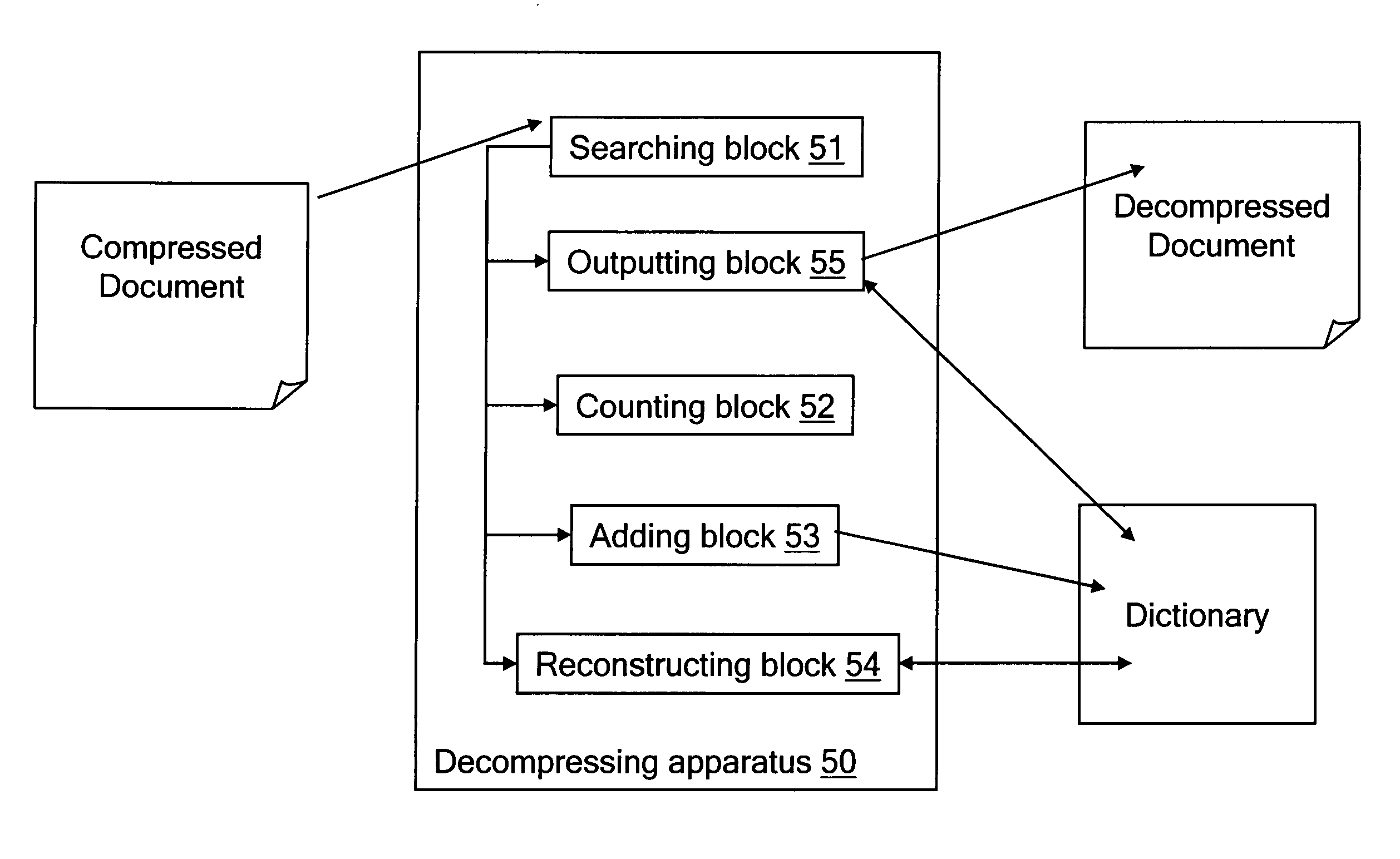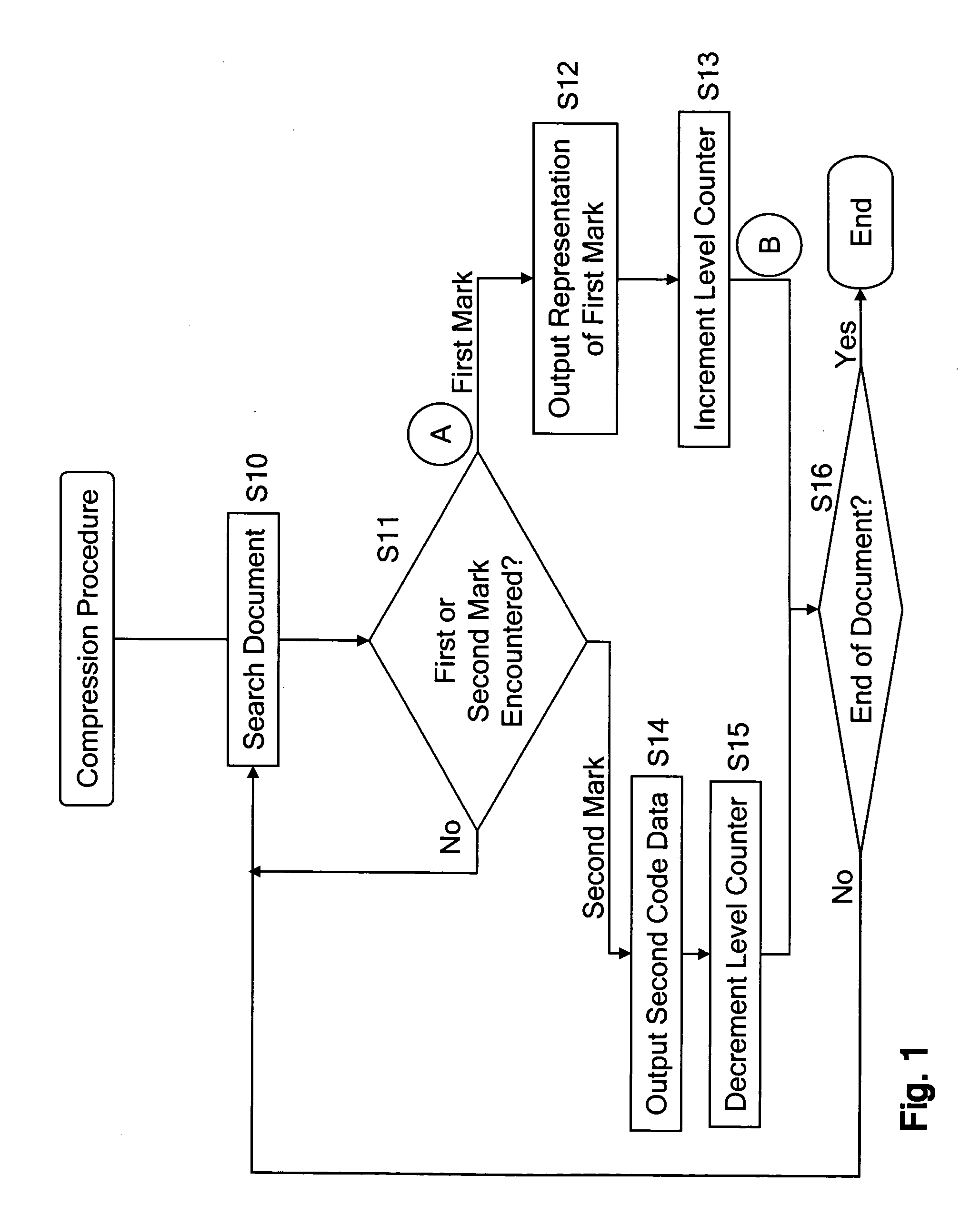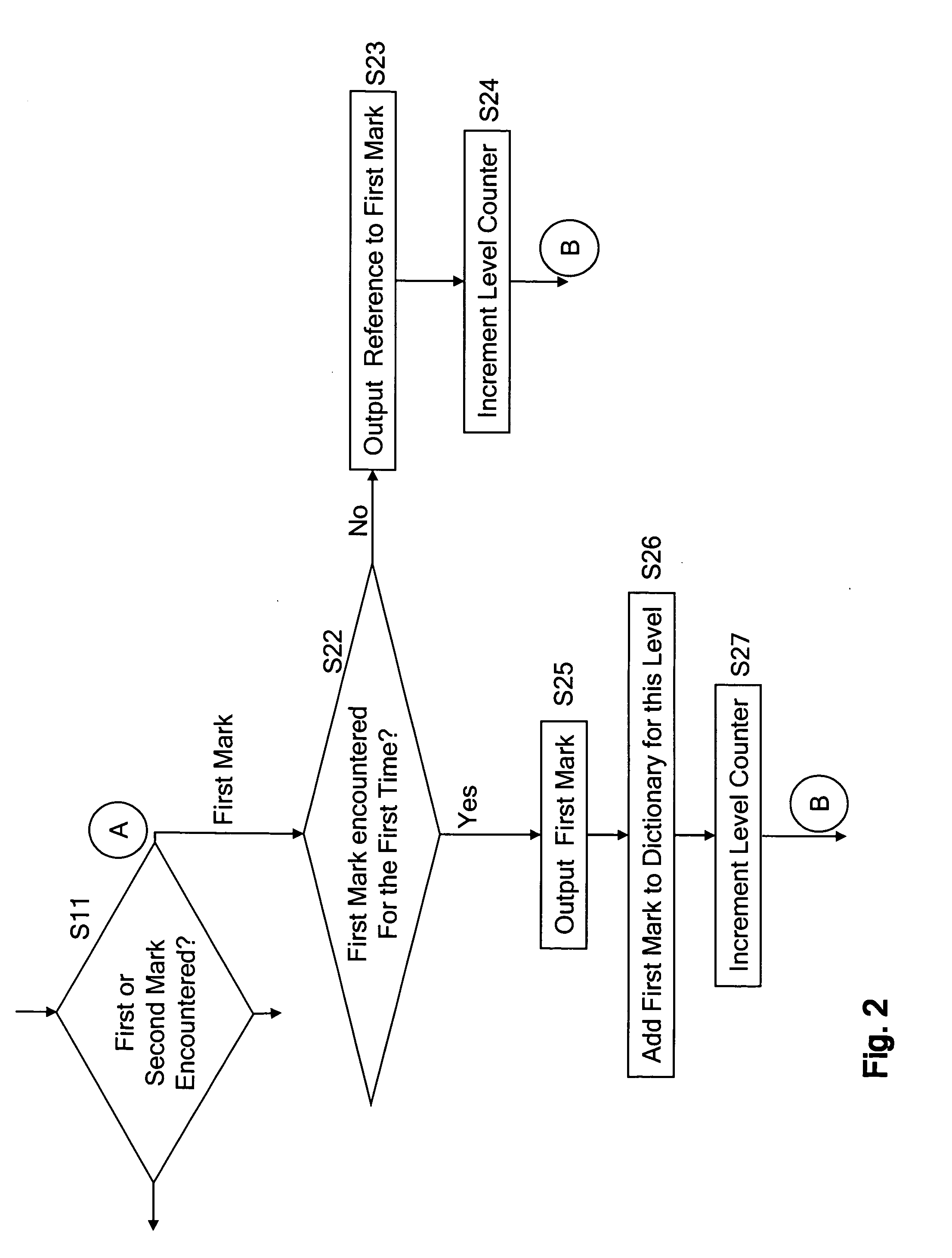Adaptive compression scheme
a compression scheme and compression scheme technology, applied in the field of adaptive compression scheme, can solve the problems of large storage space, more network resources, and drawback, and achieve the effect of improving compression/decompression scheme and low memory consumption
- Summary
- Abstract
- Description
- Claims
- Application Information
AI Technical Summary
Benefits of technology
Problems solved by technology
Method used
Image
Examples
Embodiment Construction
[0030] As shown in FIG. 7, logically all the elements in an XML document are organized in a tree structure. There is only one root element per XML document. According to the example shown in FIG. 6 CATALOG is the root element. The root element contains its child elements (CD in the example), and the child elements in turn contain their own child elements (TITLE, ARTIST, COUNTRY, COMPANY, PRICE, YEAR), and so on.
[0031] According to the invention, level numbers are assigned to the elements (i.e. nodes) in the tree. Thus, the root element has level 0, children of the root element have level 1, etc. This tree structure is utilized to generate different dictionaries for elements at different levels and compress an element only with the dictionary at its level. FIG. 8 shows the dictionaries at different levels formed from the XML document example of FIG. 6. The forming of dictionaries individually for each level in a structured document will be described in greater detail below.
[0032] I...
PUM
 Login to View More
Login to View More Abstract
Description
Claims
Application Information
 Login to View More
Login to View More - R&D
- Intellectual Property
- Life Sciences
- Materials
- Tech Scout
- Unparalleled Data Quality
- Higher Quality Content
- 60% Fewer Hallucinations
Browse by: Latest US Patents, China's latest patents, Technical Efficacy Thesaurus, Application Domain, Technology Topic, Popular Technical Reports.
© 2025 PatSnap. All rights reserved.Legal|Privacy policy|Modern Slavery Act Transparency Statement|Sitemap|About US| Contact US: help@patsnap.com



